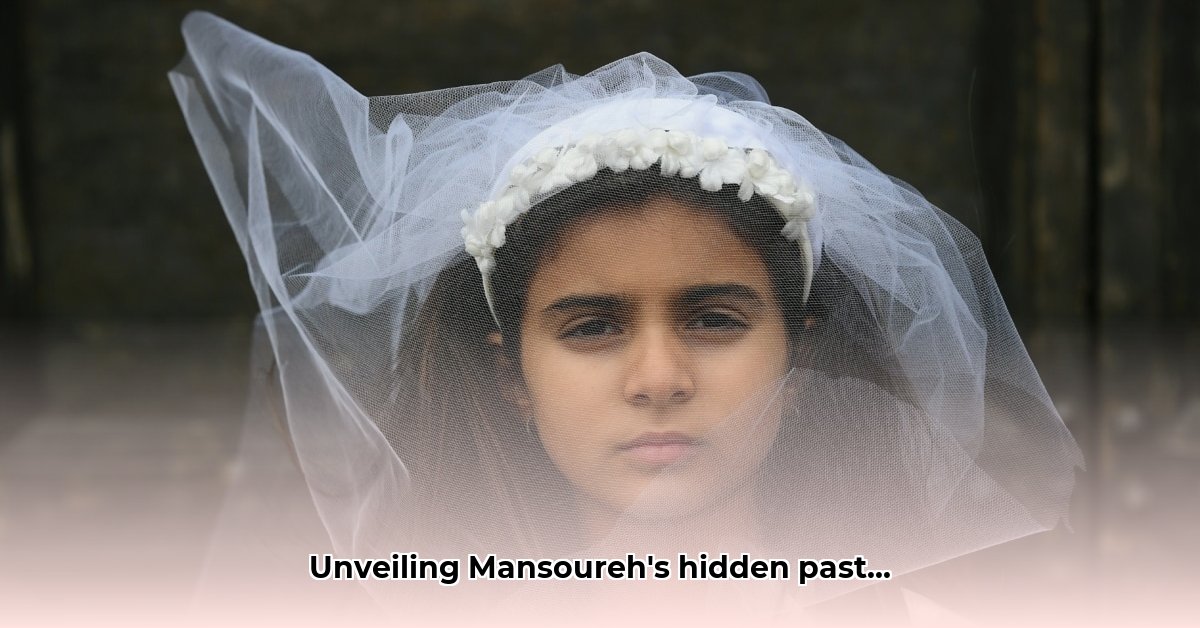Mansoureh Khojasteh Bagherzadeh, the wife of Iran’s Supreme Leader, Ali Khamenei, remains an enigmatic figure. While her husband holds a position of immense power, Mansoureh has largely remained out of the public eye, making details about her life, particularly her early years, scarce. For a more comprehensive biography, see [this detailed profile](https://www.lolaapp.com/mansoureh-khojasteh-bagherzadeh-biography). This article seeks to piece together available information to offer a rare glimpse into her life, exploring her background, family, and the forces that may have shaped her into the woman she is today. Understanding her story provides valuable context to the Khamenei family and Iranian society.
Mansoureh Khojasteh Bagherzadeh: An Exploration of Her Early Life
Born in 1947 in Mashhad, Iran, Mansoureh Khojasteh Bagherzadeh’s life took a significant turn in 1965 when she married Ali Khamenei. This union placed her at the center of Iranian politics, yet she has intentionally maintained a low profile. Her choice to remain largely unseen raises questions about her personal preferences, her role within the family, and the broader societal expectations placed upon women in positions of power in Iran. This article delves into the available details of her early life, acknowledging the limitations of the information available, to provide insights into the formative years of this influential woman.
Family and Background: Religious Roots and Social Standing
Mansoureh Khojasteh Bagherzadeh hails from a religious family with strong ties to Mashhad’s business community. Her father, Mohammad Esmaeil Khojasteh Bagherzadeh, was a well-known businessman in the city. Her brother, Hassan Khojasteh Bagherzadeh, later served as the deputy director of IRIB (Islamic Republic of Iran Broadcasting). This family background suggests a life of relative comfort and adherence to traditional Islamic values. This upbringing likely instilled in her a strong moral compass and a deep understanding of Iranian culture and society. How did these values shape her perspective on the political landscape of Iran?
Marriage to Ali Khamenei: A Life-Altering Union
In 1964, Mansoureh Khojasteh Bagherzadeh met Ali Khamenei, then a rising figure in religious and political circles, in a private ceremony. Their marriage the following year, officiated by Ayatollah Mohammad Hadi Milani, marked the beginning of a lifelong partnership. Together, they have four sons – Mostafa, Mojtaba, Masoud, and Meysam – and two daughters, Boshra and Hoda. Each of their children has pursued different paths, with some involved in religious studies, political activities, and business ventures. How did Mansoureh navigate her role as a wife and mother within a family so deeply intertwined with Iranian politics?
Limited Public Presence: A Deliberate Choice?
Despite her husband’s prominent position, Mansoureh Khojasteh Bagherzadeh has consistently avoided the public spotlight. Unlike many spouses of political leaders, she rarely appears in public events or engages in media interviews. This deliberate choice to remain private has fueled speculation about her motivations and her role within the Khamenei family. Some suggest it reflects her personal preference for a quiet life, while others believe it is a strategic decision to protect her family’s privacy and security. What are the implications of her choice to remain largely unseen in a society where visibility often equates to power and influence?
Protecting Revolutionary Ideals: A Supportive Role in Tumultuous Time
While details of her early political involvement are scarce, anecdotes suggest Mansoureh played a supportive role during Ali Khamenei’s activism before the 1979 revolution. One story recounts how she hid rebellious pamphlets and books in her clothing when authorities came to arrest him in the 1970s.This act of courage demonstrates her commitment to her husband’s cause and her willingness to take risks to protect his revolutionary ideals. Such actions hint at a determined and resourceful character, operating behind the scenes to support her husband’s political endeavors.
Humanitarian Activities and Quiet Influence: A Glimmer of Insight
While Mansoureh Khojasteh Bagherzadeh has largely remained out of the public eye, some reports suggest her involvement in humanitarian activities. She is known to have visited families of war veterans and those affected by the Iran-Iraq War, offering support and assistance. Although specific details about her philanthropic endeavors are limited, her actions suggest a compassionate nature and a desire to make a positive impact on the lives of others. How might her humanitarian work reflect her personal values and her understanding of the needs of Iranian society?
Personal Life and Family: Balancing Tradition and Modernity
Mansoureh Khojasteh Bagherzadeh’s personal life reflects a blend of tradition and modernity. While adhering to conservative Islamic values, she has also supported her children’s education and professional pursuits. Her sons have pursued careers in religious studies, politics, and business, while her daughters have also received education and established their own families. This balance suggests a commitment to both upholding traditional values and empowering her children to succeed in a changing world. How has she navigated the complexities of raising a family within the context of Iran’s evolving social and political landscape?
The Enduring Enigma: Unanswered Questions and Lingering Mysteries
Mansoureh Khojasteh Bagherzadeh remains an enigmatic figure whose life story is shrouded in secrecy. Despite the limited information available, it is possible to glimpse a portrait of a woman shaped by her religious upbringing, her supportive role in her husband’s political career, and her commitment to her family and community. Her decision to remain out of the public eye adds to the intrigue surrounding her life, raising questions about her motivations, her influence, and the broader dynamics of power and privacy in Iranian society. What can we learn from her story about the challenges and choices faced by women in positions of power in Iran?
Legacy and Influence: A Lasting Impact on Iranian Society
Although Mansoureh Khojasteh Bagherzadeh’s public profile is minimal, her influence as the wife of Iran’s Supreme Leader cannot be ignored. Her actions, her values, and her choices have undoubtedly had an impact on her family, her community, and Iranian society as a whole. Her story serves as a reminder of the complex roles that women play in shaping history, even when their contributions are not always visible to the outside world. How will she be remembered in the annals of Iranian history, and what lessons can future generations draw from her life?
Key Takeaways:
- Mansoureh Khojasteh Bagherzadeh’s life is marked by both privilege and privacy.
- Her family background and marriage to Ali Khamenei have shaped her role in Iranian society.
- Her limited public presence reflects a deliberate choice to remain out of the spotlight.
- Anecdotal evidence suggests her support for her husband’s political activities and her involvement in humanitarian work.
- Her life story offers insights into the challenges and choices faced by women in positions of power in Iran.










